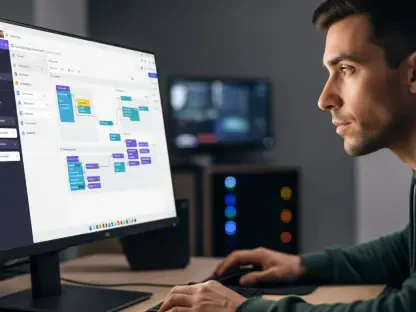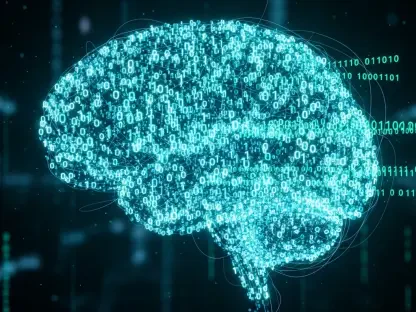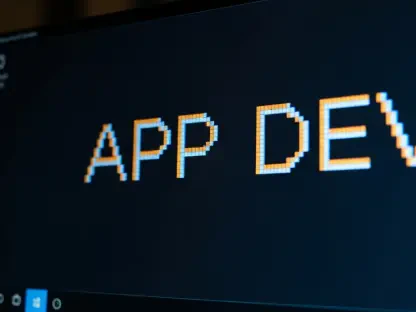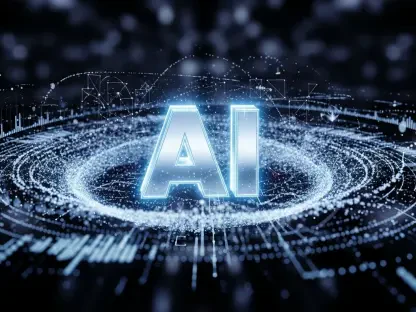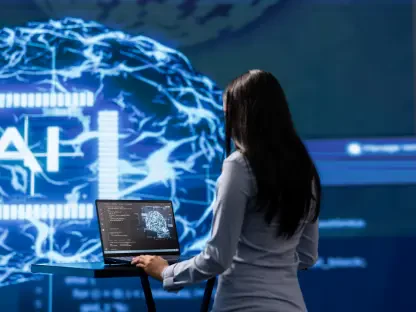In the fast-evolving world of software development, a striking statistic reveals that developers using AI tools can complete tasks up to 50% faster than those relying solely on traditional methods, highlighting a pivotal shift in coding practices. This remarkable boost in efficiency shows how artificial intelligence is no longer just a concept but a daily tool reshaping workflows. The comparison between AI-generated code and human developers has become a central topic as industries grapple with balancing speed, creativity, and responsibility. This analysis dives into the strengths and limitations of both approaches, exploring how they impact productivity, innovation, and ethics in software engineering. By examining their roles side by side, a clearer picture emerges of how technology and human expertise can coexist in this dynamic landscape.
Understanding the Landscape: AI and Human Developers in Software Development
The realm of software engineering today is a fascinating blend of AI-driven automation and human ingenuity, each playing distinct yet interconnected roles. AI-generated code, powered by advanced language models, has emerged as a transformative force, capable of drafting scripts, debugging errors, and suggesting optimizations with unprecedented speed. Tools like GitHub Copilot and ChatGPT have integrated seamlessly into development environments, assisting coders by predicting needs and providing real-time solutions. Their adoption reflects a broader trend of leveraging machine learning to handle the mechanical aspects of programming, reshaping how projects are approached across various scales.
Human developers, on the other hand, have long been the cornerstone of technological progress, bringing a depth of understanding and problem-solving that machines cannot replicate. Their expertise lies in crafting tailored solutions, navigating complex challenges, and driving innovation through critical thinking. Historically, humans have built the very systems that AI now enhances, establishing a legacy of creativity and adaptability that remains vital in addressing nuanced, user-centric demands in software creation.
The comparison between AI and human developers is not merely academic but deeply relevant to productivity, innovation, and the trajectory of coding itself. As startups and tech giants alike adopt hybrid workflows, the interplay between automated efficiency and human oversight is shaping industries in profound ways. This growing collaboration sparks curiosity about how both forces can complement each other, paving the way for a future where technology amplifies human potential rather than competes with it.
Key Comparisons: Evaluating Strengths and Performance
Efficiency and Productivity in Coding Tasks
When it comes to raw speed, AI-generated code often outpaces human efforts, particularly in repetitive or standardized tasks. Automation of boilerplate code, formatting, and basic debugging allows developers to focus on higher-level design, slashing task completion times significantly. Studies indicate that AI tools can accelerate workflows by up to 50% and cut debugging durations by around 40%, offering a clear edge in high-pressure environments where deadlines loom large.
In contrast, human developers typically follow a slower, more methodical pace, prioritizing accuracy over haste. While this deliberate approach may extend timelines, it often results in fewer oversights in complex scenarios where context matters. Humans excel in refining code through iterative testing and personal judgment, a process that AI, bound by pre-existing patterns, sometimes struggles to match in terms of precision.
A notable area of distinction lies in versatility across coding domains. AI demonstrates remarkable proficiency in handling multilingual programming and optimizing legacy systems, tasks that can be cumbersome for humans unfamiliar with specific languages or outdated frameworks. This capability underscores AI’s role as a powerful assistant, though it lacks the adaptive learning humans apply when tackling unfamiliar challenges head-on.
Creativity and Complex Problem-Solving
AI’s approach to coding, while efficient, often falls short in the realm of creativity, as it relies heavily on patterns derived from vast training datasets. When faced with undocumented issues or unique design needs, AI tools may produce generic or impractical solutions, lacking the intuitive leap required for true innovation. This limitation becomes evident in projects demanding bespoke architectures or novel user experiences, where originality is paramount.
Human developers, by contrast, shine in their ability to think outside conventional boundaries, drawing on imagination and a deep understanding of user psychology. Their capacity to address intricate, domain-specific problems—such as tailoring healthcare systems to regulatory nuances—demonstrates a level of insight AI cannot replicate. Humans bring a personal touch to problem-solving, often crafting solutions that resonate with specific business or cultural contexts.
Real-world examples further illustrate this divide. Consider the development of a custom e-commerce platform: while AI might efficiently generate the backend code, a human developer is better equipped to design an intuitive interface that aligns with brand identity and customer expectations. Such scenarios highlight the irreplaceable value of human innovation in navigating uncharted territory and delivering impactful results.
Ethical Judgment and Accountability
One of the most critical distinctions between AI and human developers lies in ethical reasoning, an area where machines are inherently limited. AI-generated code, devoid of moral context, poses risks when applied to sensitive fields like finance or defense, potentially producing outputs that disregard societal norms or legal constraints. Without human intervention, these tools cannot weigh the consequences of their suggestions, raising concerns about unintended harm.
Human developers, equipped with a sense of responsibility, are uniquely positioned to ensure that code aligns with ethical standards and cultural values. Their ability to anticipate the broader implications of their work—such as privacy concerns in data handling—makes them indispensable in high-stakes projects. This capacity for moral decision-making fosters trust and accountability, elements that AI alone cannot provide.
The issue of accountability further complicates the comparison. When AI generates flawed or harmful code, attributing responsibility becomes a murky endeavor, often leaving organizations vulnerable to legal or reputational risks. Human oversight, therefore, remains essential to monitor and correct AI outputs, ensuring that critical decisions reflect deliberate intent rather than algorithmic oversight, a balance crucial for maintaining integrity in software development.
Challenges and Limitations: Navigating the Downsides
AI-generated code, despite its advantages, faces significant hurdles that temper its widespread adoption. Risks of inadvertently reproducing copyrighted material create legal ambiguities around ownership and authorship, posing challenges for companies reliant on proprietary solutions. Additionally, over-dependence on AI tools may lead to skill erosion among developers, diminishing their ability to code independently over time and potentially stunting professional growth.
Human developers encounter their own set of obstacles in this rapidly shifting landscape. Keeping pace with technological advancements and mastering AI tools demands continuous learning, adding pressure to already demanding roles. The expectation to integrate automation while maintaining expertise in core programming principles can strain resources and focus, particularly for those in smaller teams or resource-limited settings.
Broader ethical and societal concerns also loom large for both approaches. The potential displacement of entry-level coding jobs by AI raises questions about the future of workforce development, while trust in machines for high-stakes decisions remains a contentious issue. Regulatory frameworks, such as the European Union’s AI Act, advocate for a “human-in-the-loop” model to balance innovation with accountability, reflecting a global push to address these dilemmas through structured oversight and policy.
Conclusion: The Path Forward for AI and Human Collaboration
Reflecting on the journey through this comparison, it becomes evident that AI-generated code and human developers each bring distinct strengths to the table, with AI excelling in efficiency and humans in creativity and ethics. The exploration highlights how their collaboration proves more powerful than competition, as AI tackles repetitive tasks while humans steer strategic vision. Looking ahead, the actionable step is to embrace this partnership by integrating AI as a productivity booster, ensuring that human oversight remains central to critical and innovative endeavors. A key consideration for the future involves establishing robust training programs to help developers adapt to AI tools without losing core skills. Moreover, fostering dialogue on ethical guidelines promises to address societal concerns, ensuring technology serves humanity responsibly. This synergy, if nurtured with intention, holds the potential to drive unprecedented progress in software development.


